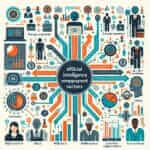The IELTS Reading section is designed to test a range of reading skills, including the ability to understand the main ideas, identify specific information, recognize the writer’s opinions, and infer meaning. One recurring theme in the Reading section is environmental issues, which frequently appear due to their global relevance and wide-reaching impacts. “What are the environmental impacts of single-use plastics?” is a highly topical and critical issue, making it a likely subject for future IELTS Reading tests. In this article, we’ll explore this topic by providing a comprehensive reading practice material, questions, and detailed answers to help you prepare effectively.
Reading Passage: The Environmental Impacts of Single-Use Plastics (Medium Text)
Single-use plastics refer to plastic products that are intended for one-time use before being discarded. These items include plastic bags, straws, cutlery, beverage bottles, and food packaging. The widespread use of single-use plastics poses significant environmental challenges that affect ecosystems, wildlife, and human health.
One of the most visible impacts of single-use plastics is litter. Plastic waste accumulates in the environment, often ending up in oceans, rivers, and other natural habitats. Marine animals frequently mistake plastic debris for food, leading to ingestion and potentially fatal blockages in their digestive systems. Birds, fish, and even larger mammals such as whales have been found with substantial amounts of plastic in their stomachs.
plastic-pollution-ocean|Ocean Pollution|A photograph depicting a vast amount of plastic waste floating on the surface of the ocean, emphasizing the severity of plastic pollution in marine environments.
Aside from ingestion, entanglement is another serious threat posed by single-use plastics. Discarded fishing nets, known as ‘ghost nets,’ and other plastic debris can ensnare aquatic creatures, causing injuries, suffocation, or death. Moreover, plastics do not biodegrade but instead break down into smaller particles known as microplastics. These microplastics are pervasive in water bodies and have been identified in various marine species, moving up the food chain and potentially impacting human health.
The manufacturing of single-use plastics also contributes to environmental degradation. The production process relies heavily on fossil fuels, resulting in greenhouse gas emissions that exacerbate climate change. Furthermore, the extraction and refining of raw materials for plastic production can lead to habitat destruction and pollution.
Efforts to mitigate the environmental impacts of single-use plastics involve reducing consumption, enhancing waste management practices, and encouraging the development of sustainable alternatives. Many countries have implemented bans or levies on plastic bags, promoting the use of reusable alternatives. Recycling initiatives and public awareness campaigns also play pivotal roles in addressing plastic pollution.
Questions
Multiple Choice
-
What is one primary cause of single-use plastics ending up in oceans?
A. Increased recycling efforts
B. Ingestion by marine animals
C. Poor waste management practices
D. Enhanced public awareness -
Which of the following best describes ‘ghost nets’?
A. Microplastics
B. Recyclable plastic bags
C. Discarded fishing nets
D. Single-use straws
Identifying Information (True/False/Not Given)
- Single-use plastics biodegrade quickly and do not pose any threat to the environment.
- Efforts to reduce the use of single-use plastics include banning or charging for plastic bags.
- The production of single-use plastics has no connection to greenhouse gas emissions.
Summary Completion
Complete the summary below. Choose NO MORE THAN THREE WORDS from the passage for each answer.
The widespread use of single-use plastics has significant negative consequences for the 1. __. Marine animals can mistake plastic debris for 2. __, leading to ingestion and potentially fatal blockages. Additionally, discarded fishing nets and plastic debris can cause 3. __ of aquatic creatures. Reducing the consumption of single-use plastics can be achieved through enforceable measures such as 4. __ or levies and promoting sustainable alternatives.
Answers and Explanations
Multiple Choice
- C. Poor waste management practices – Single-use plastics often end up in oceans due to inadequate waste disposal methods.
- C. Discarded fishing nets – ‘Ghost nets’ refer to fishing nets that have been abandoned in the ocean.
Identifying Information (True/False/Not Given)
- False – The passage states that plastics do not biodegrade but break down into microplastics.
- True – The passage mentions that many countries have implemented bans or levies on plastic bags.
- False – The passage explains that the production of single-use plastics involves fossil fuel use, leading to greenhouse gas emissions.
Summary Completion
- environment
- food
- entanglement
- bans
Common Mistakes and Tips
Common Mistakes
- Overlooking specific details: Pay close attention to terms such as ‘biodegrade’ and ‘microplastics’ as they often require careful reading to understand their implications.
- Misinterpreting key ideas: Ensure you differentiate between similar concepts, such as litter and entanglement.
- Ignoring global terms: Words like ‘efforts,’ ‘initiatives,’ and ‘roles’ highlight actions taken to address the problem.
Tips
- Always read the instructions carefully for each type of question.
- Skim the passage first to get a general understanding, then read the questions and return to the passage for more detailed reading.
- Practice different types of questions regularly to become familiar with their format and requirements.
Vocabulary
- Biodegrade (v): /ˌbaɪ.oʊ.dɪˈɡreɪd/ – To decompose by the action of living organisms.
- Microplastics (n): /ˌmaɪ.krəˈplæs.tɪks/ – Very small pieces of plastic that pollute the environment.
- Entanglement (n): /ɪnˈtæŋ.ɡəl.mənt/ – The action of being caught in something such as a net or wire.
- Levy (n): /ˈlɛ.vi/ – An amount of money, such as a tax, that you have to pay to a government or organization.
Grammar
- Passive Voice: Used to emphasize the action rather than the subject. Example: “Plastic waste is often found in oceans,” instead of “Oceans often find plastic waste.”
- Modal Verbs: Used for expressing necessity or possibility. Example: “Single-use plastics must be minimized to protect the environment.”
Advice for High Reading Scores in IELTS
- Improve Vocabulary: Build a robust vocabulary by reading various topics and using flashcards.
- Practice Consistently: Regular reading practice builds familiarity with the types of passages and questions.
- Time Management: Allocate your time effectively during the test, spending more time on difficult questions.
- Understand Keywords: Learn to quickly identify key concepts in questions and map them to the passage.
By understanding the environmental impacts of single-use plastics and practicing related reading passages, you can enhance your reading skills and perform better in the IELTS Reading test. Stay informed on current topics, practice regularly, and improve your vocabulary and grammar to achieve a high band score.


